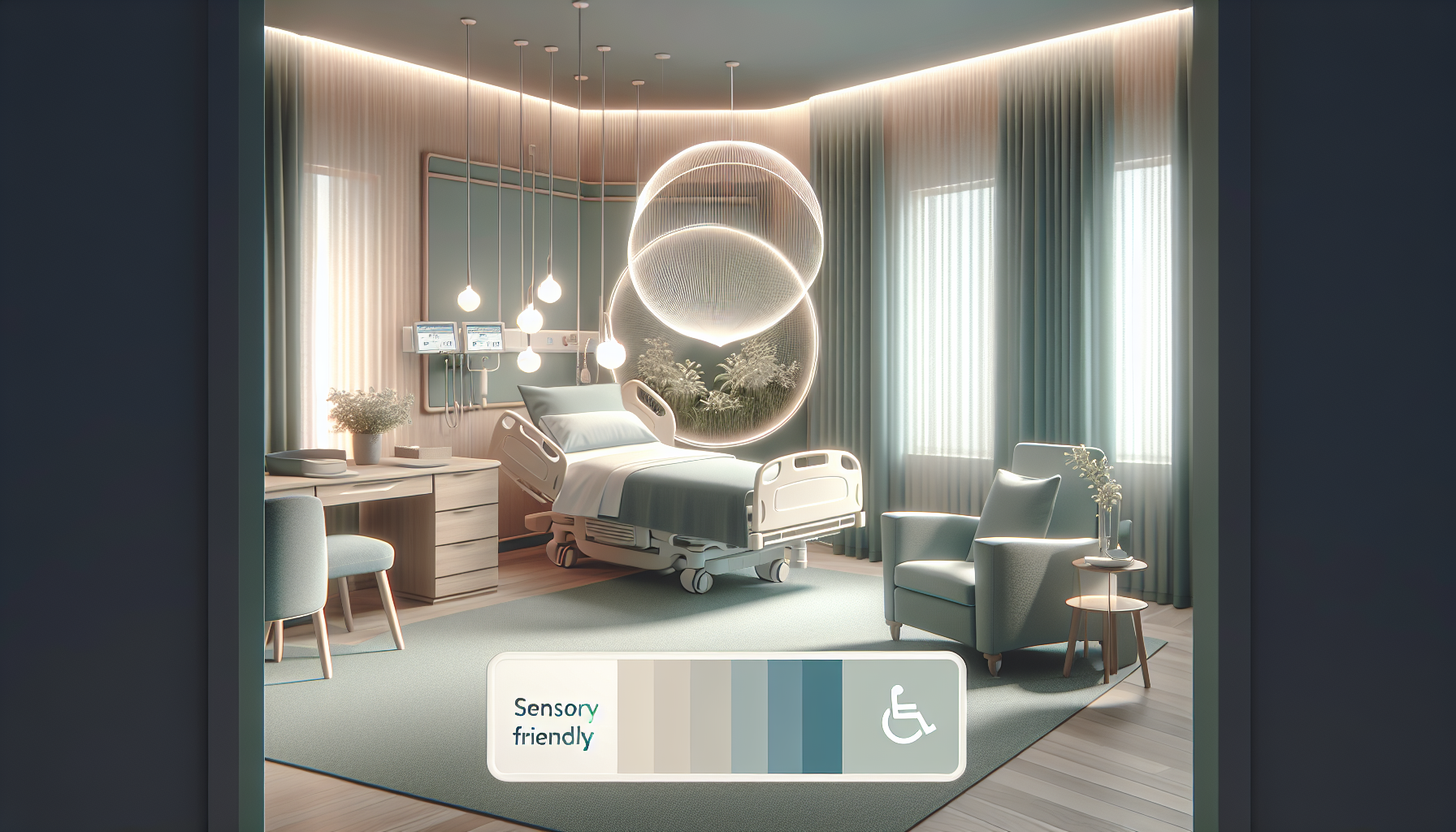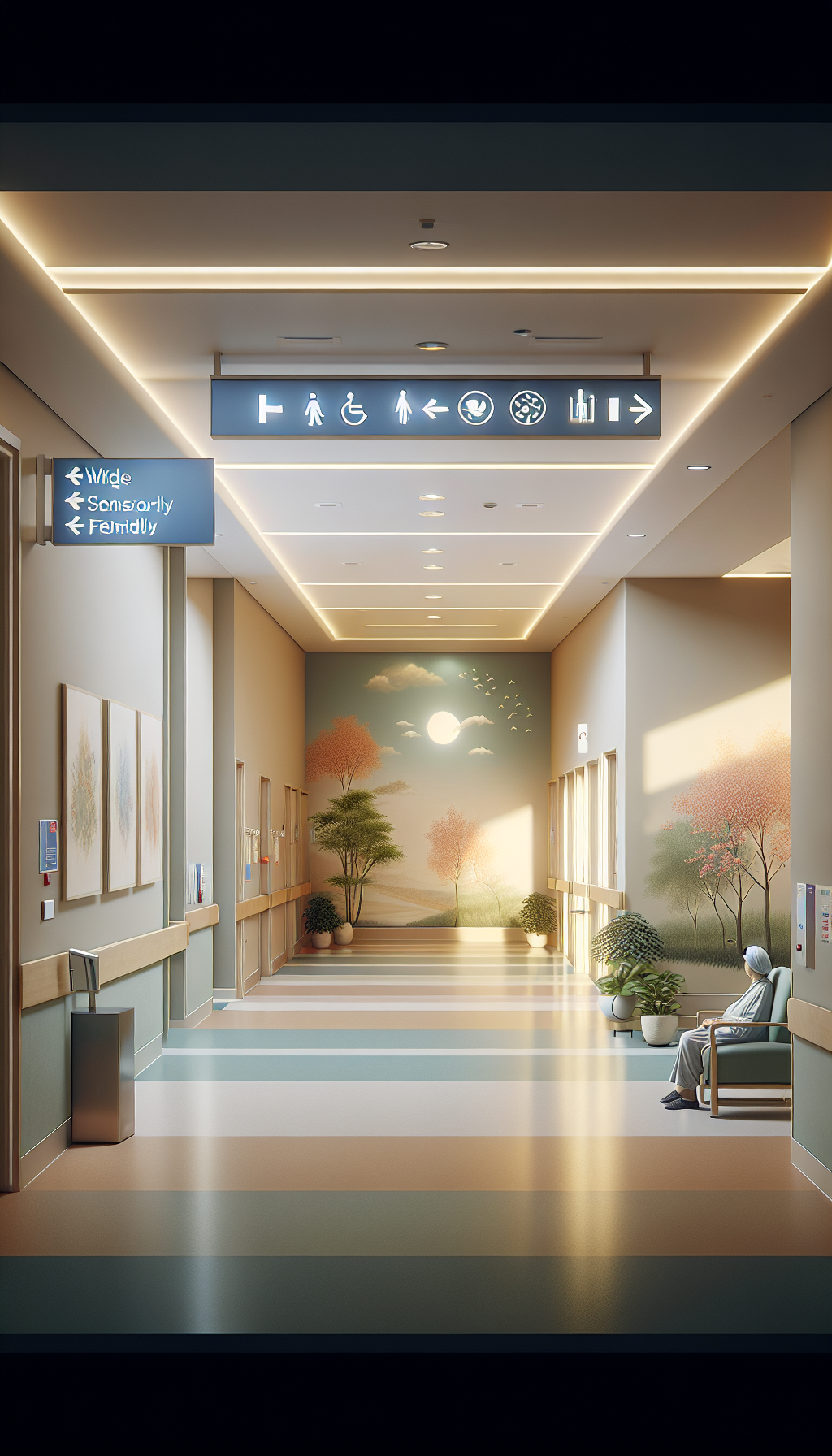In an era where healthcare moves towards patient-centered care, the role of sensory-friendly environments in hospitals is becoming increasingly recognized. Sensory-friendly design caters to individuals with sensory processing challenges, including those on the autism spectrum, with ADHD, or sensory sensitivities due to other disabilities or conditions. By integrating specific design elements and care practices that minimize sensory overload, hospitals can provide a supportive and healing environment for all patients.
The Essence of Sensory-Friendly Environments
Sensory-friendly environments are designed to avoid overwhelming the senses. This is crucial because a hospital stay can be stressful, with unfamiliar sounds, sights, and smells that can exacerbate anxiety and discomfort, particularly for those with heightened sensory sensitivities. Sensory-friendly design principles aim to create spaces that are calming and reassuring, thereby enhancing the patient experience and potentially improving recovery rates.
For a deeper understanding of sensory health and its impact on overall well-being, the article on Sensory Health at Avix Health provides valuable insights.
Integrating Sensory Design in Hospitals
Lighting
Harsh lighting can be distressing for sensory-sensitive individuals. Hospitals are incorporating adjustable and natural lighting options wherever possible. Dimmable LED lights and access to natural light can help patients regulate their sensory input, which in turn can aid in reducing anxiety and improving sleep quality.
Color
The colors used in a hospital setting can have a profound impact on a patient’s mood and stress levels. Soft, neutral colors are often recommended to induce a sense of calm. Some facilities may also use color zones to help navigate the space easily, which can be particularly beneficial for patients with cognitive impairments.
Acoustics
Sound is a critical factor in sensory design. Hospitals are exploring ways to minimize noise pollution, such as using sound-absorbing materials and providing patients with headphones or white noise machines. Quiet rooms can also be made available for patients who need a space to retreat from the sensory stimuli of the hospital environment.
Texture and Materials
The tactile experience in a hospital can be tailored to be soothing rather than clinical. Wall finishes, flooring, and furniture that are smooth and non-irritating to the touch are preferred. Incorporating elements such as weighted blankets or soft furnishings can also provide comfort to patients with sensory processing difficulties.
Wayfinding
Navigating a large hospital can be overwhelming. Sensory-friendly wayfinding solutions include clear signage with symbols, interactive maps, and the use of colors and textures on floors and walls to guide patients through the space.
Sensory Tools and Care Practices
Aside from design, the implementation of sensory tools and specialized care practices is essential in creating a sensory-friendly hospital environment.
Sensory Rooms
Some hospitals have introduced sensory rooms – spaces where patients can control the sensory environment to suit their needs. Features might include adjustable lighting, sound systems, and tactile objects. For insights into the features of these innovative spaces, consider the article on Innovative Sensory Room Features for Enhanced Therapy.
Staff Training
Training hospital staff to recognize and respond to the needs of sensory-sensitive patients is key. Understanding how to identify signs of sensory overload and knowing how to adjust the environment or interactions accordingly can make a significant difference in patient care.
Personalized Care Plans
Individual care plans that take into account a patient’s sensory preferences can help tailor the hospital experience to their needs. This might involve scheduling tests and treatments at times when the hospital is quieter or allowing for breaks during procedures.
Benefits and Challenges
Incorporating sensory-friendly practices in hospital design and care presents numerous benefits, such as reduced anxiety and stress, increased patient satisfaction, and potentially faster recovery times. However, challenges such as cost and the need for widespread staff training remain. To understand the impact of such environments on patient recovery, the article on The Impact of Sensory Environments on Patient Recovery Rates offers valuable data.
External Resources
For those looking to explore the topic further, here are some niche and specific resources:
- The Center for Health Design explores how design can improve healthcare experiences, including sensory considerations.
- The STAR Institute provides research and education on sensory processing disorder, including its implications for care environments.
- The American Occupational Therapy Association offers resources on sensory integration therapies which can inform hospital practices.
- The Sensory Project showcases innovative sensory-friendly projects and designs across various settings.
- Autism Speaks has guidelines on creating autism-friendly spaces which can be adapted for hospital settings.
Conclusion
Creating a hospital environment that is sensitive to the needs of all patients, especially those with sensory processing challenges, requires thoughtful design and dedicated care practices. By considering the impact of sensory stimuli and implementing sensory-friendly design elements and tools, healthcare facilities can become places of true healing and comfort for everyone.



